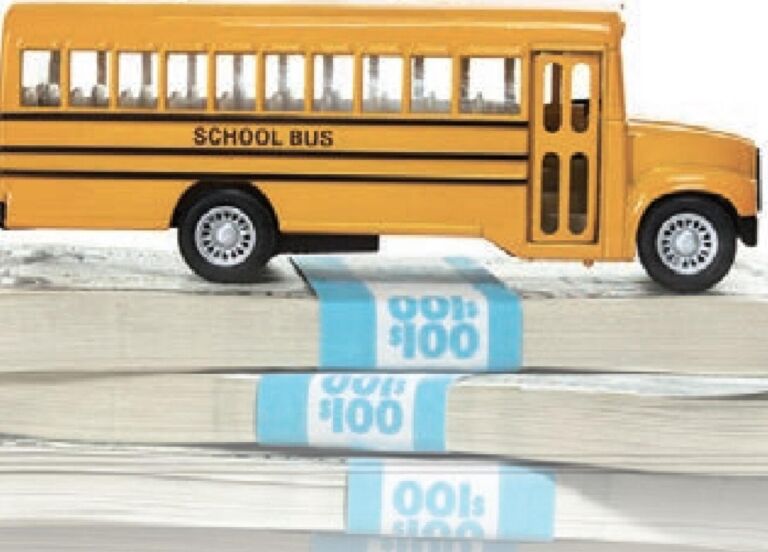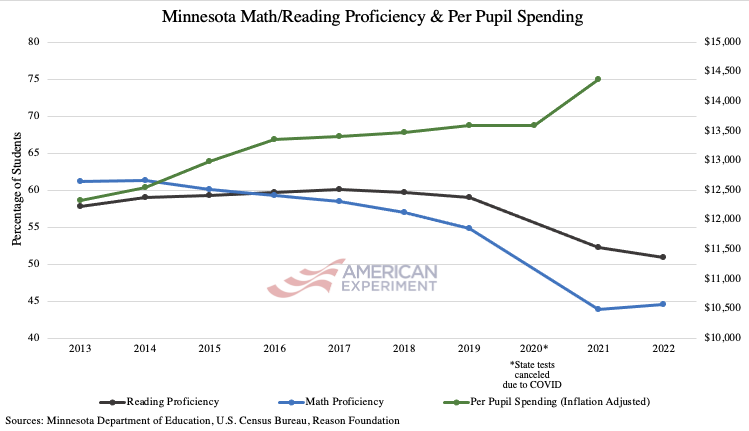Minnesota K-12 funding is up, enrollment down

State funding per K-12 student — adjusted for inflation — is up 31 percent since 2002 despite enrollment being down 2 percent, according to an analysis by the Reason Foundation.
The analysis covers K-12 funding and spending growth from 2002 to 2020, documenting an upward trend in dollars being funneled into Minnesota’s education system as public schools lose students. Total K-12 state funding adjusted for inflation is up 29 percent over that same time period, coming in at nearly $8.9 billion for 2020. Total K-12 funding — state, federal, and local — adjusted for inflation is up 22 percent ($13.8 billion).
Inflation-adjusted spending per student is up 22 percent since 2002, and inflation-adjusted total spending is up 20 percent, amounting to $11.8 billion in 2020.
Minnesota K-12 enrollment* over the 18-year analysis dropped 2 percent and continued to take hits during COVID-19. Enrollment data for the 2022 school year is expected sometime this month/early February and will confirm whether the state’s public schools see a third consecutive year of enrollment declines.
Enrollment is not the only area that has declined as funding and spending have gone up. Student academic proficiency is in free fall, with fewer than half of Minnesota students proficient in math (44.6 percent) and just under 50 percent not able to read at grade level.
(The graph below shows stagnant and in-decline reading and math scores since 2013. Given the changes made to the statewide math and reading tests in 2011 and 2013, I chose to begin plotting test data in 2013 to ensure an apples-to-apples comparison with student proficiency today.)

State leaders, policymakers and spending advocates, you owe it to taxpayers and Minnesota families and students to make your argument for increased school funding in honest terms.
*The U.S. Census does not have data from charter schools held by a non-governmental entity (e.g., a non-profit) in its Census files.
